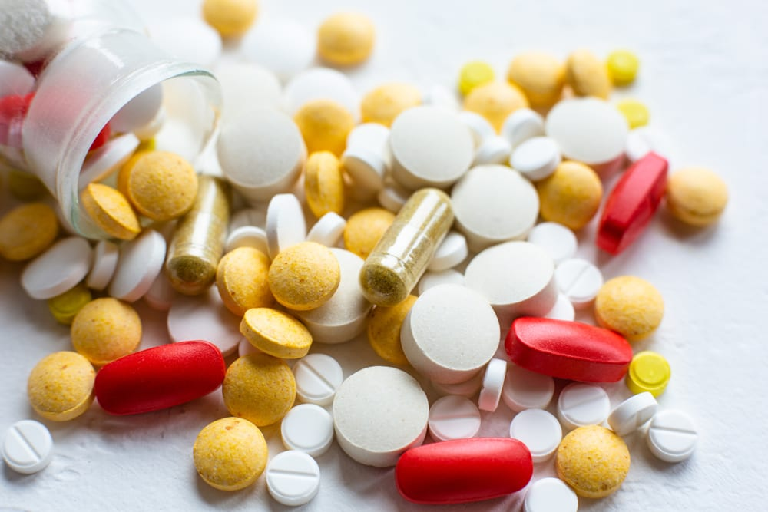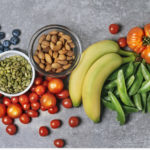While people over the age of 60 account for more than half of all shingles cases, less than 15 percent get the vaccination that helps prevent the blistering skin rash, which can cause lingering nerve pain.
“I awoke with such pain in my head and neck area I thought someone must have taken a lead pipe to me during the night,” recalls Rose Hallarn, who was 57 at the time. “After watching what I went through, my husband made a point of getting vaccinated – both because of what he had seen me go through and also on advice of his physician – but it wasn’t something that was necessarily top of mind for him before that.”
Now, a new study from researchers at Ohio State University is reporting that older patients who receive written information on shingles were almost three times more likely to get vaccinated than those that didn’t receive a similar communication. The study is also one of the first to show that using a patient’s electronic medical record (EMR) coupled with pharmacist intervention markedly improves preventative care of shingles over the current standard.
The research team, led by Stuart Beatty, a pharmacist with Ohio State’s College of Pharmacy, says that the low vaccination rate is due to a combination of factors including lack of awareness, cost, access to clinics able to store the fragile vaccine and the fact that face-to-face appointments don’t offer enough time to discuss shingles, also known as herpes zoster.
“With older patients, there are usually more pressing health issues to discuss during routine appointments, so herpes zoster falls off the list,” says Beatty. “Plus, as a live vaccine, it’s not appropriate for people with certain illnesses. There usually isn’t time to figure all that out in a regular office visit.”
For the six-month study, which was supported by the Ohio State Center for Clinical and Translational Science (CCTS), Beatty and his team used electronic medical record (EMR) data to identify more than 2,500 patients over the age of 60 without a documented herpes zoster vaccination. Some were randomized to receive information about shingles via a secure email linked to their online personal health record (PHR) or a mailed postcard, while others received no information outside what they may have gotten in a routine doctor visit.
Pharmacists reviewed the EMRs of patients who had received emails or mailed information to identify eligible vaccine candidates, and then sent them a vaccination prescription via standard mail, along with a list of local pharmacies that offered the vaccine. Vaccine fulfillment was tracked by reports submitted to the team by local pharmacists.
Patients with an active PHR that received email information on shingles had the highest vaccination rate of 13.2 percent compared to a rate of 5.0 percent for patients with an active PHR that did not receive the email information. For patients that did not have an active PHR but did receive mailed information, the vaccination rate was 5.2 percent compared to a rate of 1.8 percent for patients without an active PHR and received no information.
Neeraj Tayal, MD, an Ohio State Wexner Medical Center general internist on the research team, noted that while the numbers of patients vaccinated may seem small, the study was conducted in 2010-2011, a time when the national vaccination average was actually 6 percent, far lower than today’s average of 15 percent. Tayal also suggests that despite the overall low vaccination rate, the results challenge the notion that there are too many logistical barriers to this type of effort.
“It took pharmacists a matter of minutes to review the chart and mail out a prescription. This saved the physician time, the patient time, and improved the overall health of our patients,” says Tayal, who is also an expert on how EMR and PHR can improve clinical practice. “By utilizing pharmacists as members of a care team, many perceived logistical barriers were managed and overcome.”
Hallarn, who did not participate in the study, recovered fully from her bout with shingles, and got vaccinated to help prevent a recurrence. An active user of her online health record, Hallarn says she requested a prescription for the shingles vaccine online through her chart, but then had to manually update her file to reflect that she had gotten the vaccine, something that study authors acknowledge is an ongoing issue.
“We found a few patients that said they had already been vaccinated, but there was no record of it in their EMR, which isn’t surprising given that the current information exchange between a physician’s office and a community pharmacy is extremely limited,” says Beatty. “As EMR use and a team approach to patient care increases, this health information exchange will be critical for success.”
As an example, the authors reported that during the EMR review, pharmacists were able to identify a few patients who shouldn’t get the vaccine. These patients had their chart updated so the contraindication will appear for any provider trying to order the vaccine in the future. According to Tayal, this offers a peek at the potential of EMRs.
“Between 40 percentand 60 percent of office-based providers and hospitals in the US have adopted an EMR system. While it’s too early to tell whether EMRs will save money, our intervention model shows there are opportunities to manage chronic and preventable illnesses, prevent medication interactions, and integrate team-based care in ways that would result in better care and cost savings,” says Tayal.
Winter and spring are the most common times of the year for shingles outbreaks. According to Tayal, shingles generally causes a blistering rash on the face, chest, belly or legs, and is accompanied by intense pain lasting between two to four weeks. Some patients are stricken with a prolonged pain syndrome called “post herpetic neuralgia” that can last months, or in rare cases, years. The rash can lead to complications ranging from blindness to urinary problems. The pain often develops before a rash is noticed so patients often seek medical attention for pain that is misdiagnosed until the rash develops. The vaccine can reduce the chances of catching shingles by 51 percent or reduce the severity of an outbreak.
The study was published in The American Journal of Medicine.
Source: Ohio State University Center for Clinical and Translational Science (CCTS)
































